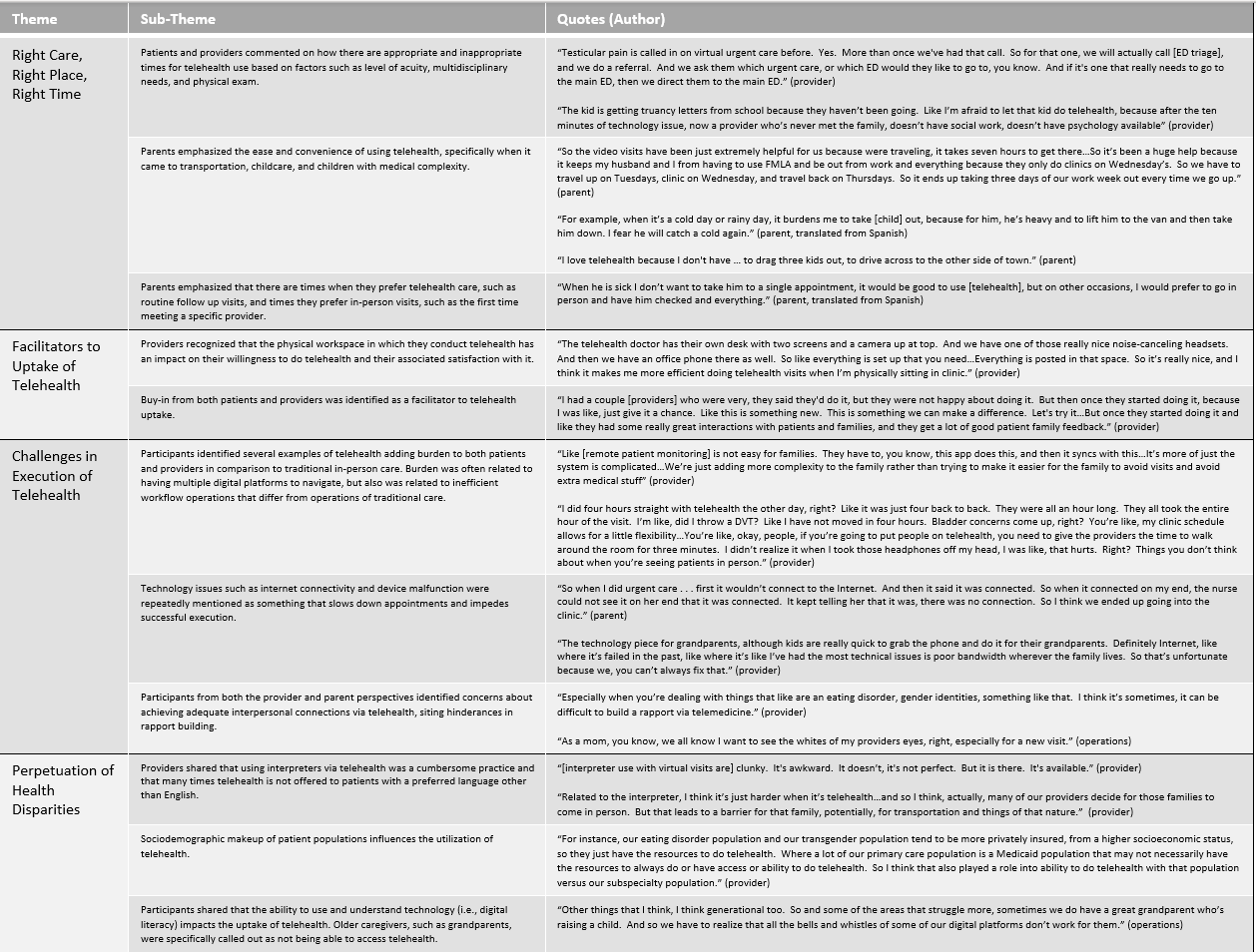Technology
Session: Technology 2
193 - Qualitative exploration of access to telehealth through interviews of key stakeholders at a pediatric hospital
Sunday, May 5, 2024
3:30 PM - 6:00 PM ET
Poster Number: 193
Publication Number: 193.2054
Publication Number: 193.2054

Courtney Sump, MD MSc (she/her/hers)
Assistant Professor
Cincinnati Children's Hospital Medical Center
Cincinnati, Ohio, United States
Presenting Author(s)
Background: Telehealth has the potential to improve access to care by eliminating barriers such as transportation and childcare. Telehealth’s rapid adoption and disbursement after the pandemic prohibited slow and measured implementation, and therefore may have led to disproportionate uptake by certain populations. Thus, we led an institutional effort to better understand access to telehealth services.
Objective: Gain an in-depth understanding of telehealth access at a large quaternary care children’s hospital.
Design/Methods: This qualitative study employed semi-structured interviews of key stakeholders across our institution, including parents, those involved in clinical care (eg, physicians, nurses, advanced practice providers), and those involved in telehealth operations (eg, schedulers, business directors, medical directors). The interview guide targeted care access domains prioritized by our hospital: appropriateness, timeliness, ease, convenience, and equity. Interviews were recorded and transcribed verbatim. Using an inductive, thematic approach, each interview was coded independently by 2 study team members with disagreements resolved in group discussions. The multidisciplinary research team then identified preliminary themes, and iteratively reviewed interviews and codes to finalize themes with illustrative quotes.
Results: We interviewed 23 stakeholders, including 5 parents. Primary themes, descriptions, and illustrative quotes are in Table 1. The first theme was that while telehealth might not always be the best choice for care (eg, a surgical emergency), there are many times where it is the best option to provide the right care at the right place at the right time. There are challenges in its execution (eg, added burden and tech issues) that lead to decreased uptake. Conversely, concepts such as buy-in and optimal work environments can help to facilitate its uptake. Finally, a theme of telehealth perpetuating health disparities was revealed, including provider reluctance to offer telehealth to patients with a preferred language other than English (Figure 1).
Conclusion(s): Telehealth has many challenges in successful execution, but is an integral component to provision of the right care at the right place and time. Our findings also identify that real and perceived assumptions about who is best suited for telehealth care run the risk of perpetuating health disparities and exacerbating gaps in access to care. Future directions include targeted quality improvement efforts and a focus on equity during the design and implementation phases of new digital health ventures.

.png)
